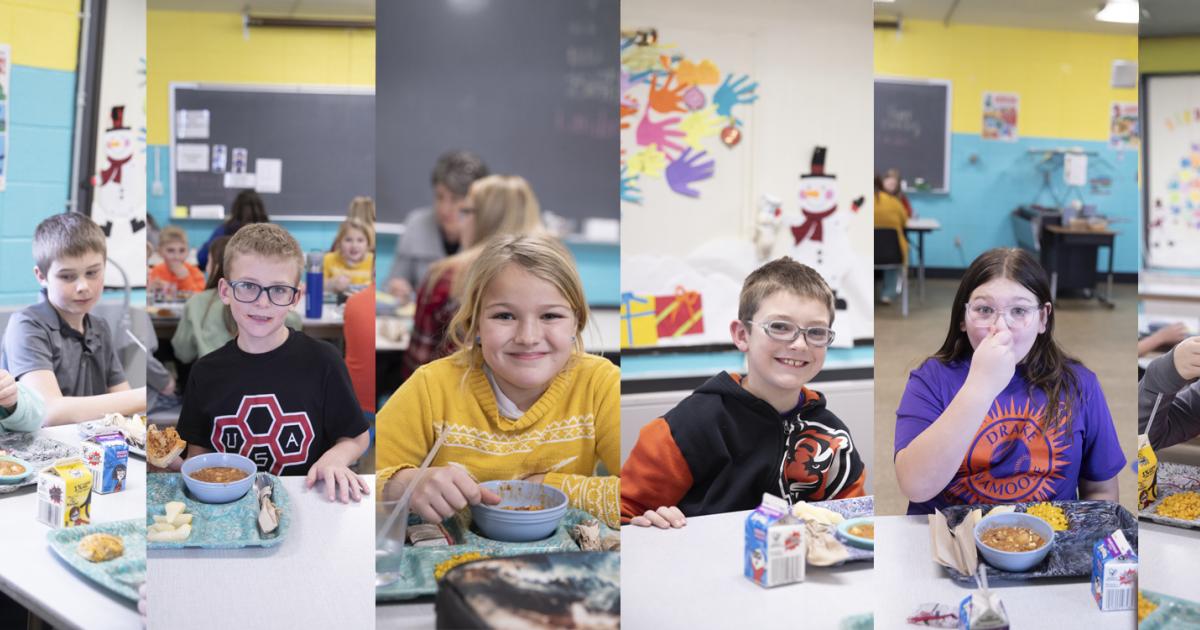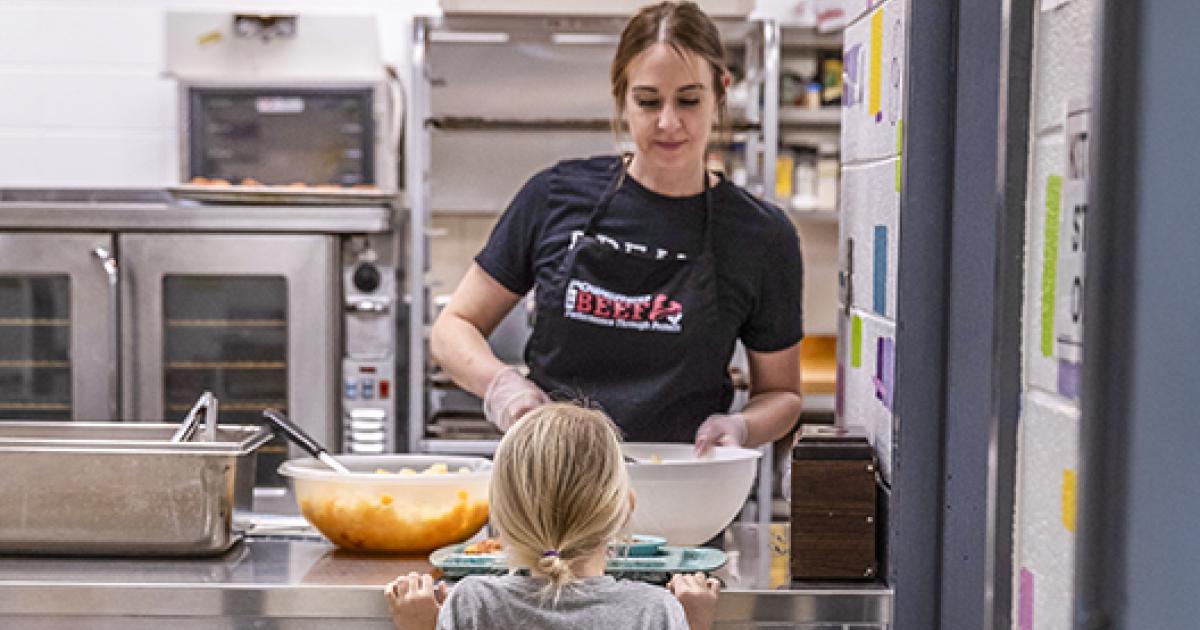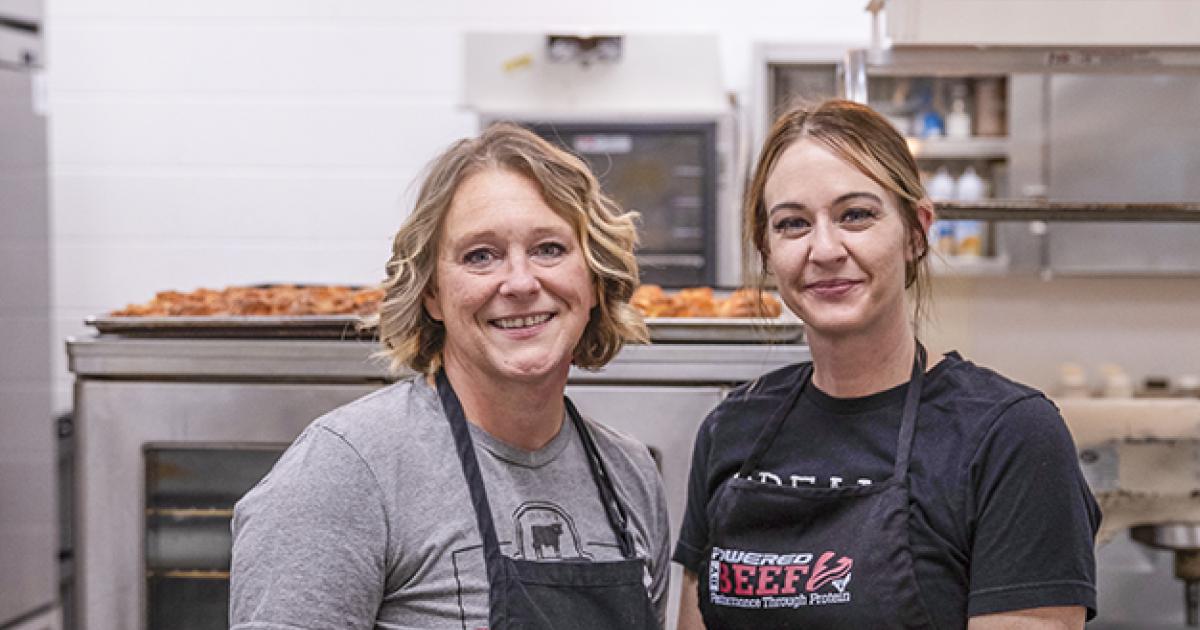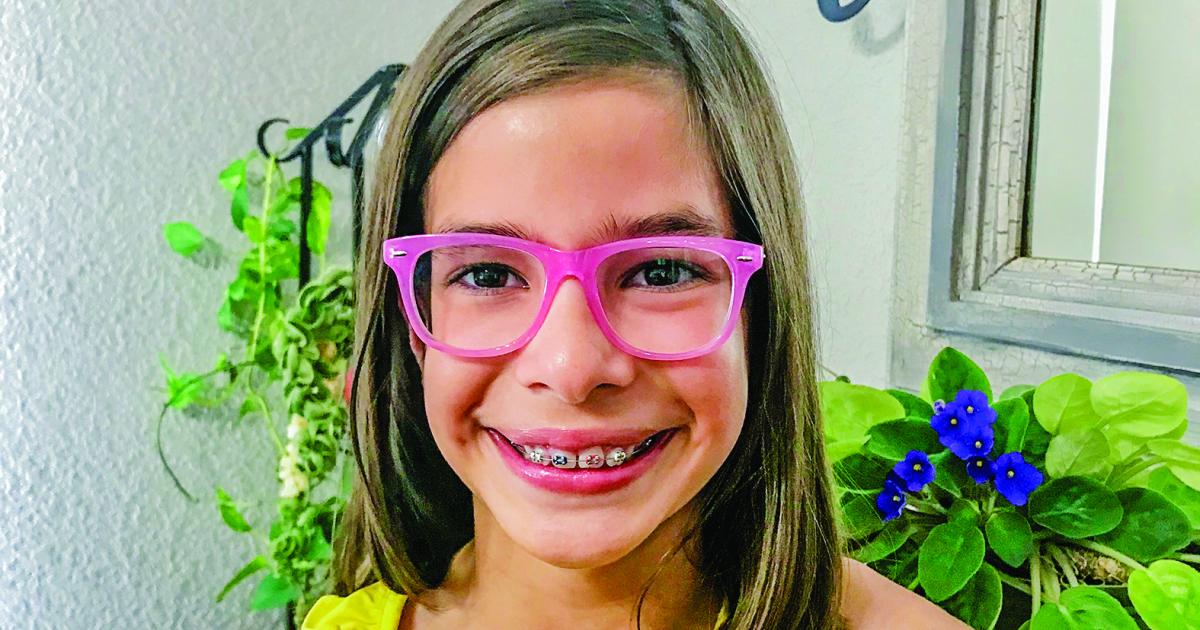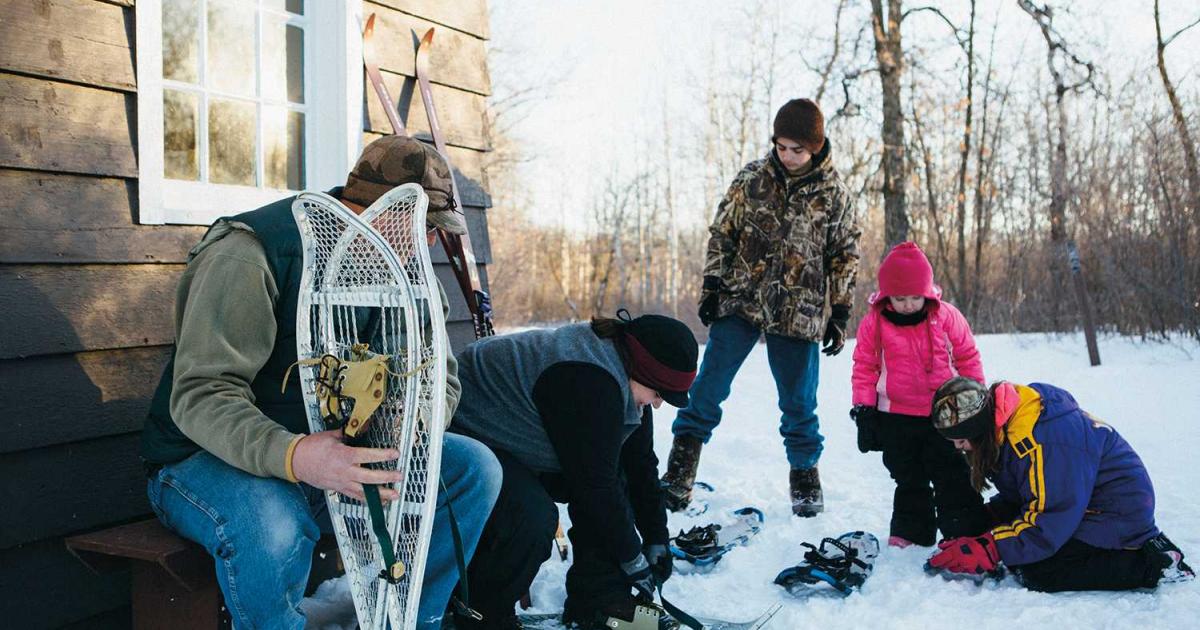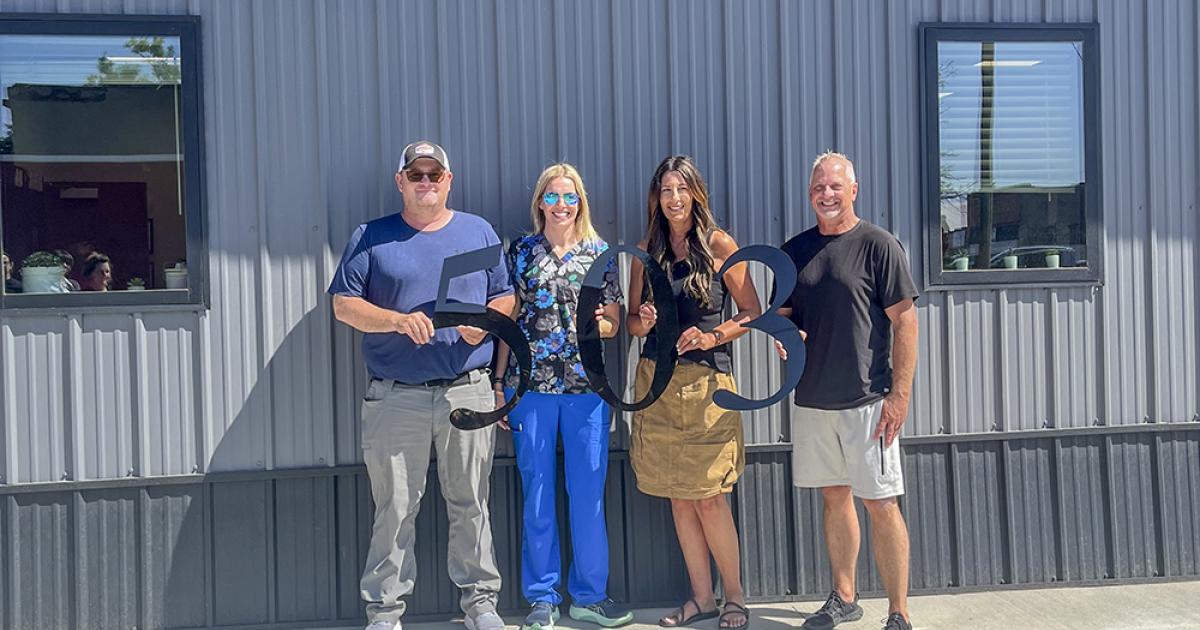School garden teaches, feeds and nourishes in Anamoose
Photos by NDAREC Kennedy DeLap
At the small, rural school in Anamoose, a young girl runs to the cafeteria door with a giant smile and tiny brown seed in hand. She politely asks for a plastic bag to take her trophy home – a pepper seed she found during lunch – so she could plant it and grow peppers.
Miranda Reider, assistant cook and the school’s “bread master,” happily obliges, explaining this is a common occurrence at the Anamoose-Drake Elementary School.
Other common occurrences include the smell of freshly made bread, rolls, stew and muffins, first-graders eating beets and many refrains of “Thank you, Barbie” and “Did this come from the garden?”
The Anamoose-Drake Elementary School participates in the Farm to School program, which encourages North Dakota schools and child cares to purchase local foods, including locally raised meats and vegetables, from North Dakota producers. The Farm to School program aims to increase healthy eating habits and educate students, staff and communities about their health, how to grow their own food and the importance of local purchasing for the local economy.
The program has even inspired schools, like in Anamoose, to bring the farm to the school by maintaining their own school gardens.
“When the kids get a chance to have their hands in the dirt, they learn a lot, and they are more willing to eat the fruits and vegetables that they grow,” says Amanda Olson, Farm to School specialist with the N.D. Department of Public Instruction and an Anamoose school board member.
“For instance, like beets, what kids are going to eat beets? But I pickled the beets here and made them into a sweet pickle, and we put them on the salad bar, and the kids eat them, because they are bright and they are colorful,” says Head Cook Barbie Martin.
“(The students) knew that they grew them, they knew that they picked them and that they had a hand in all of that,” Olson says.
The school will plant its 14th garden this spring.
“Schools like Anamoose have been doing farm to school for years, before we even were calling it (the) Farm to School program,” Olson says.
LOCALLY GROWN AND SCRATCH-MADE
During her first year as head cook, Martin was inspired at a workshop where school gardens were discussed. She approached a retired principal and teacher, Deb Reinowski, who was known to be an avid gardener.
“And from there, it just took off,” Martin says.
Reinowski now happily shares her 1-acre garden with the elementary students. She has a green binder full of the intricacies of her garden – where to plant certain vegetables, which grow best together and more. She purposefully plants unique vegetables in her garden, like kohlrabi, to expose the kids to a plethora of produce.
In the spring, the children plant seeds in the garden. Children who go to summer school tend the garden, and they see their hard work pay off in the fall.
Last year, the garden yielded 226.5 pounds of carrots, 181 peppers, 121.93 pounds of zucchini, 783.30 pound of tomatoes, 363 pumpkins and much more.
The kids even get to take produce home. Olson recalls huge pumpkins lining the hallways in the fall and the joy the students had getting to take them home to their families. The same is true for zucchini, carrots, potatoes and the other garden vegetables.
The rest is kept for Martin to cook with during the school year. Prepared and frozen, the produce can last until February. Her scratch-made recipes take months to rotate – knoephla soup, chicken parmesan, beef stroganoff, meatloaf and mashed potatoes, pancakes, tacos and more – but luckily for the kids, she always takes their requests.
“On dreary, winter days, when you have a little bit of that produce left, to be able to cut into something green or something ripe, I mean, that helps a lot,” Olson says.
The school also gets beef from a local rancher, which gives the kids and staff better quality meat while also helping the community, says Anamoose-Drake Superintendent Steve Heim.
SETTING THE TONE
For Martin, the best part of her job is the kids.
Two years ago, Martin became ill, going back and forth from the hospital for treatment. Every single week, the teachers and students would make her care packages filled with origami crafts, cards and touches of joy.
“They made me things to keep me busy and keep my mind off what was going on in my life. And so, knowing that I mean something to them, and they mean the world to me,” Martin says.
Sometimes, along with a full belly and friendly smile, the kids need a hug, a pick-me-up, to unload some of their troubles without having to give anything in return, which Martin happily provides.
Martin’s presence and the culture she has set up in the lunchroom is important for the entire school, Heim says. On Halloween, Martin and her team dressed in costume and served Halloween-themed dishes.
“The (cafeteria staff) all just set the tone with the kids,” Heim says.
LEARNING IN THE DIRT
Though gardening is hard work, the local community, school staff and the school board support the school garden and recognize the health and social benefits.
“It takes a lot of commitment. It takes a lot of people to help with it, too,” Olson says. “As long as we continue to have that buy-in, and we have the excitement around it, I think we would always do what we can to continue to support it.”
When the snow melts this spring, the garden shed on Reinowski’s acre plot will be filled with children grabbing little gloves and jumping at the chance to get in the dirt.
She’s fueled by the smiles on the children’s faces and teaching them things that will stay with them forever.
“The garden project has put two of my favorite things together: gardening and kids,” Reinowski says.
___
Kennedy DeLap is interning with North Dakota Living. She can be reached at kdelap@ndarec.com.


